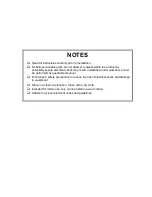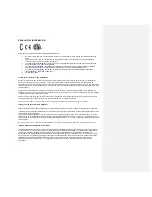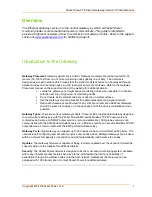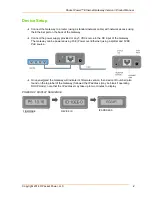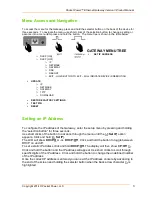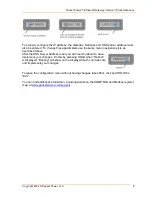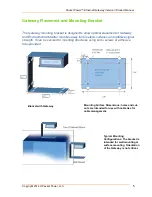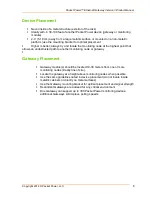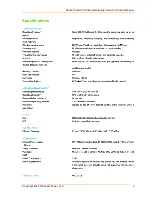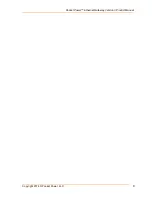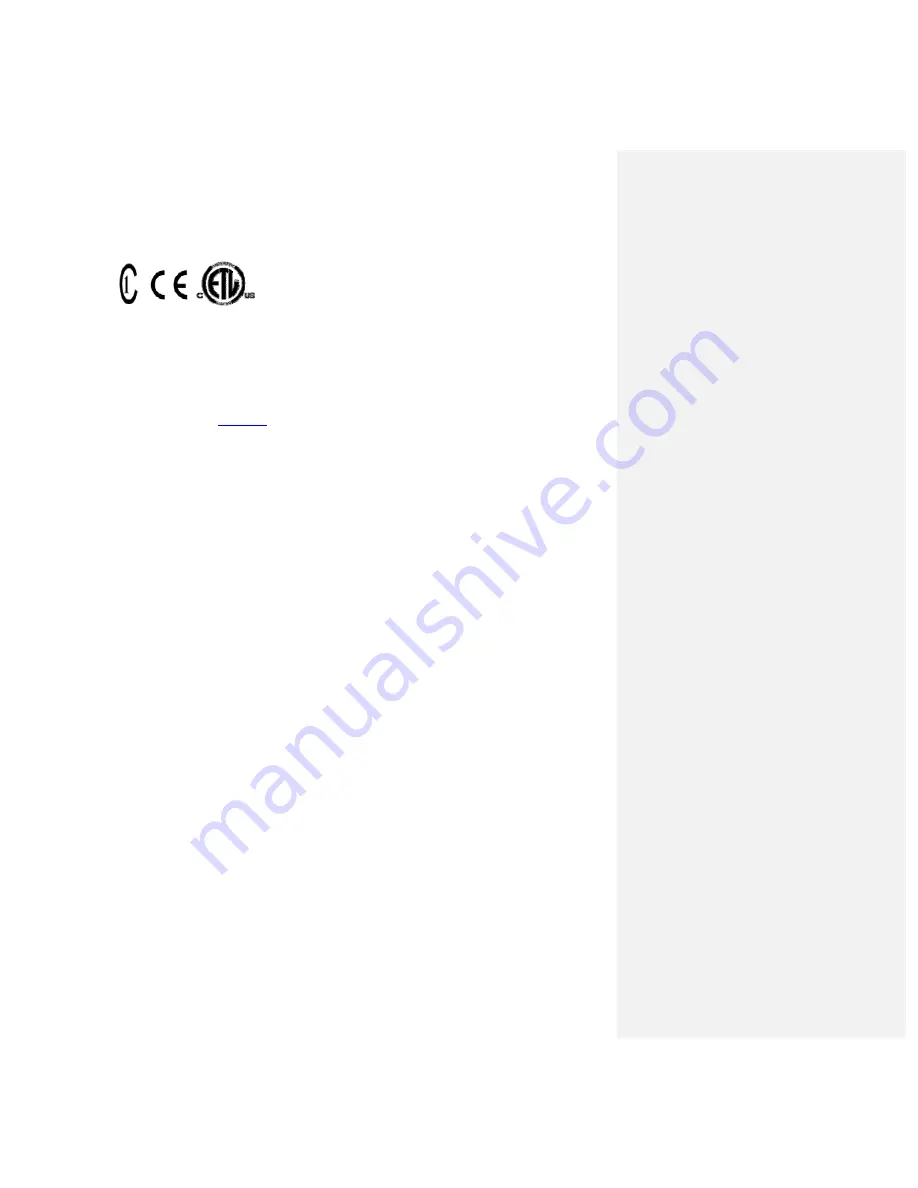
REGULATORY INFORMATION
This product has been certified to meet the following requirements:
UL / ANSI standards 61010-1,Second Edition, Dated July 12, 2004 with revisions through and including October 28,
2008
CAN/CSA-C22.2 No. 61010-1, second edition, including Amendment 1, or a later version of the same standard
incorporating the same level of testing requirements.
Council Directive 2006/95/EC (December 12, 2006) on Low Voltage Equipment Safety; IEC 61010-1:2001 (Second
Edition) and EN 61010-1:2001 (Second Edition)
Council Directive 1999/05/EC - European Union (EU) Radio & Telecommunications Terminal Equipment Directive
(R&TTE) ETSI EN 300 220-2, Issued:2006/04/01 and ETSI EN 301 489-3, Issued:2002/08/01 V1.4.1
Council Directive
2004/108/EC
(December 15, 2004) on Electromagnetic Compatibility CENELEC EN 61326-1
Issued:2006/05/01; IEC 61326-1:2005;:1997 –
AS/NZS 4268: 2008
Class B Device Statement / FCC Regulations:
Section 15.105(a) of the FCC Rules: This equipment has been tested and found to comply with the limits for a Class B digital
device, pursuant to part 15 of the FCC Rules. These limits are designed to provide reasonable protection against harmful
interference when the equipment is operated in a commercial environment. This equipment generates, uses, and can radiate radio
frequency energy and, if not installed and used in accordance with the instruction manual, may cause harmful interference to radio
communications.
Section 15.19 of the FCC Rules: This device complies with part 15 of the FCC Rules. Operation is subject to the following two
conditions: (1) This device may not cause harmful interference, and (2) this device must accept any interference received, including
interference that may cause undesired operation.
Pursuant to Part 15.21 of the FCC Rules, any changes or modifications to this product not expressly approved by Packet Power
LLC might cause harmful interference and void the FCC authorization to operate this product.
Pursuant to part 2.1091c of the FCC rules device is categorically excluded from routine RF Exposure regulations.
Industry Canada (IC) Compliance Statement
This device complies with Industry Canada license-exempt RSS standard(s). Operation is subject to the following two conditions:
(1) This device may not cause interference, and (2) this device must accept any interference, including interference that may cause
undesired operation of the device.
Under Industry Canada regulations, this radio transmitter may only operate using an antenna of a type and maximum (or lesser)
gain approved for the transmitter by Industry Canada. To reduce potential radio interference to other users, the antenna type and
its gain should be so chosen that the equivalent isotropically radiated power (e.i.r.p.) is not more than that necessary for successful
communication.
Per section RSS-102, 2.5 of Industry Canada regulations, this device is categorically excluded from Routine Evaluation Limits.
Industrie Canada (IC) Déclaration de conformité
Le présent appareil est conforme aux CNR d'Industrie Canada applicables aux appareils radio exempts de licence. L'exploitation
est autorisée aux deux conditions suivantes : (1) l'appareil ne doit pas produire de brouillage, et (2) l'utilisateur de l'appareil doit
accepter tout brouillage radioélectrique subi, même si le brouillage est susceptible d'en compromettre le fonctionnement.
Conformément à la réglementation d'Industrie Canada, le présent émetteur radio peut fonctionner avec une antenne d'un type et
d'un gain maximal (ou inférieur) approuvé pour l'émetteur par Industrie Canada. Dans le but de réduire les risques de brouillage
radioélectrique à l'intention des autres utilisateurs, il faut choisir le type d'antenne et son gain de sorte que la puissance
ipoosotrope rayonnée équivalente (p.i.r.e.) ne dépasse pas l'intensité nécessaire à l'établissement d'une communication
satisfaisante.


